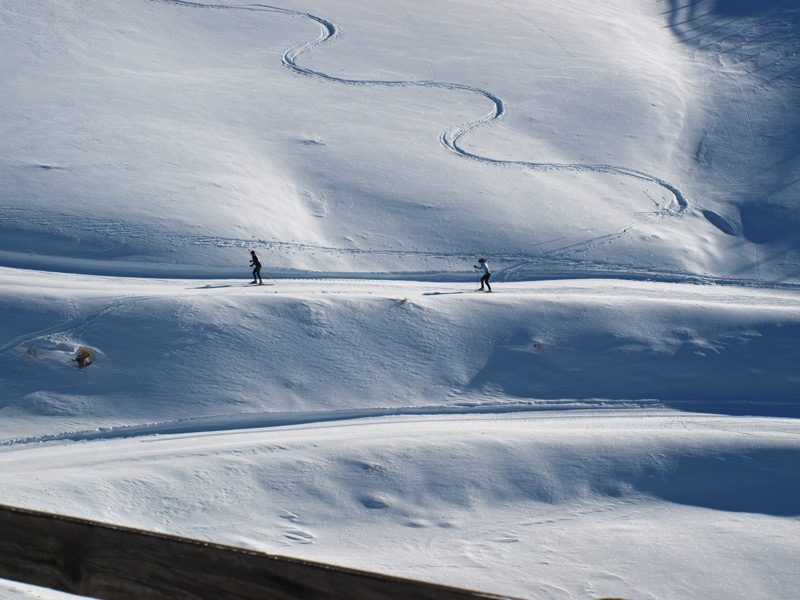
There are many kinds of virtual events, and many ways to run them. Look here for context and alternatives.
This is a simple and free solution to running a temporally distanced event on a fixed course.
Summary: Create an invitation-only club on Strava. Create a segment. When the event concludes, select the club from the segment leaderboard options to view results.
Advantages:
- Free.
- Low effort for OC.
- Strava provides tools to detect groups skiing together if Covid compliance is necessary for your region.
Disadvantages:
- Requires participants to have a GPS (phone, watch, etc.) and some mild geek skills to create a Strava account.
- Results are public.
- The leaderboard only shows the best time for each Strava account.
- If the segment is a commonly skied route, the results board will be cluttered with old results. If this happens, the OC will spend way too much time hunting through the Strava club feed for actual results.
- Sharing results in a way that reveals the connection between a person’s name and their Strava ID breaks Strava’s privacy rules. In some jurisdictions that have privacy laws, it may be necessary to use Strava IDs instead of names in the posted results.
The Recipe
Ingredients:
- One Strava account to be used by the OC.
- A trails system.
- Optional: A registration system to decide who is invited to the Strava Club.
Steps:
- Figure out your pandemic compliance plan. Here are some starting points.
- Using a web browser (not the app), create a new club, and set it to invitation-only.
- Optional: If you want to compile registrations in your usual registration system, create that first.
- In the pandemic, this may be essential to having registrants legally agree to a virtual waiver, the safety protocols, and to verify eligibility for regional travel restrictions, etc.
- This is a great way to charge an entry.
- Remember to ask for the participant’s Strava ID in order to add them to the club.
- Determine one or more segments that will serve as the designated racecourse. Make your segments private while testing. Strava fanatics will ski your course as soon as it appears to get their moment of glory.
- Find a way to make your race loop unusual. Most trail systems are littered with existing Strava segments, which combined with the heat map data, will help narrow down options. Some ideas:
- Include a loop around a building.
- If your stadium has fixed objects (trees, outhouses, stands, etc), loop around a few.
- Add a side circuit to a popular loop.
- One segment that is the entire course is probably essential. If the course has multiple laps, Strava recognizes this nicely. If you have one and two-lap versions, create two segments. Note that the fastest lap from the two-lap participants appears in your one lap leaderboard.
- Spice things up with some fun segments. A short steep climb, the wildest downhill, a 100m sprint on the flat at the top of a hill.
- Make it possible for people to discover your event, or no one will enter.
- Make the event segments public just before the event goes live.
- Getting results can be easy, especially right after the event ends. Viewing the segment that defines the course in the app or a browser allows you to look at different leaderboards. As soon as someone finishes, the club will be listed as a filter option. Choosing the club creates an instant result sheet.
- When the leaderboard doesn’t give you what you need (a participant skied the course last year and only that time is visible, GPS errors eliminated participants, etc), the plan B is hunting through the Strava club activity feed to find the missing finishes.
- Remember that if you share participant names and times in the results sheet, anyone can use Strava to find the matching Strava IDs. This matters in some jurisdictions.
The author has run three test segments, one club, and a few dozen volunteer skiers to figure out a solution. Here are some of the lessons.
- If a skier skis to the start of the segment with their watch already tracking, slips into the bathroom for a few minutes and then returns to ski the segment, the segment time will include the bathroom visit. Recommend that people start tracking when they start the event segment and not as part of a longer ski.
- If there are multiple distances or courses on the same day, making a Strava club for each distance is advised.
- Sometimes what seems like a unique and unusual route is already popular. Strava won’t show how many people have already skied a route until an hour or two after the segment is made public.
- Strava’s value to users is all about winning your training days. This means the leaderboard it creates emphasizes time and pace. This can be a problem for participation-style events.
- If your local pandemic rules set group size limits: It is easy to detect groups that start or finish together. Detecting groups that formed mid-course is more time-consuming. Asking people to start their Strava recording at the start line and end it at the finish helps with this. It also helps prevent warm-up and cool down loops out of the recorded time.
Gerry Furseth
previous
Virtual Event Hosting: Things to Think About
next



